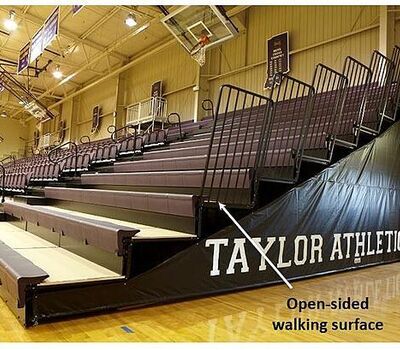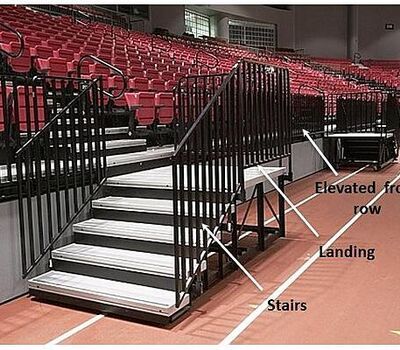Components Of Safe, Accessible Gymnasium Seating
By Anne Chapman
July 9, 2020
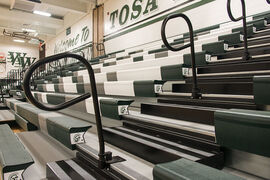
Welcome back to our ongoing series on Gymnasium Seating. We'll begin with a brief re-cap of the topics we've explored to-date. We began with an introduction to 10 Common Bleacher Seating Terms, important dimensions and measurements to know when designing your gym. To help you begin to estimate your seating capacity, we covered Terms Used to Define Seating Space.
After we clarified the terminology, the discussion turned to tips on maximizing your seating space for the best guest experience in Configure Your Gymnasium Seating.
Most recently, we covered building codes in our post on Rules That Govern Accessibility.
Now it's time to talk about the necessary seating components to keep your guests safe and keep you in compliance with the Americans with Disabilities Act (ADA), which requires gymnasiums to be accessible to people with disabilities so they, their families, and friends can enjoy equal access to entertainment and recreation. Detailed information about ADA regulations can be found on ADA's Website.
ADA Accommodations
In your gymnasium, at least one percent of the seating must be wheelchair seating locations. For venues with over 300 seats, wheelchair seating locations must be provided in more than one location. This is known as dispersed seating. Wheelchair seating locations must be dispersed throughout all seating areas and provide a choice of admission prices and views comparable to those for the general public.
A companion seat must be provided next to each wheelchair seating location. The companion seat is a conventional seat that accommodates a friend or companion. In addition to wheelchair seating locations, at least one percent of all fixed seats in all seating areas must be aisle seats with no armrest, or with a removable or folding armrest, on the aisle side. These seats accommodate people who have a mobility disability but who wish to use a seat that is not a wheelchair seating location.
Guard Rails
Safety railings are required along open-sided walking surfaces, cross aisles, stepped aisles, ramps and landings which are more than 30 inches above the floor, as illustrated in the photos below.
Aisle Handrails
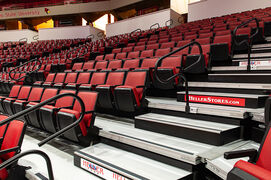
Handrails are required on all telescopic seating with more than a single row of seating. Where there is seating on both sides of the aisle a mid-aisle handrail is needed. Where there is seating on one side of the aisle the handrail is located on the side of the aisle where there are no seats.
Aisle Stairs
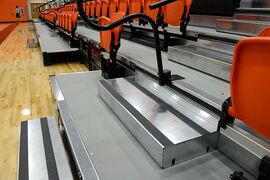
Aisle steps within an aisle are required when the row rise exceeds 8”. Intermediate aisle steps must be permanently attached and designed to eliminate any possible toe catch between the top of the intermediate step and the bottom of the nose beam, per ADA or other applicable codes. Front steps should be removable, and interlock to the front row during events to eliminate accidental disengagement.
Steps require a non-skid strip and/or carpeting for stability.
- Minimum tread depth of 11”
- Minimum riser height of 4”, maximum of 8”.
- Treads and risers must be uniform in size and shape.
- Exceptions to the uniformity: Treads and risers located in a transition area between adjacent tiered seating elements or parabolic seating.
As you follow the requirements of ADA and your local building codes, you'll provide seating that allows all guests to be a part of the action in your new facility!
